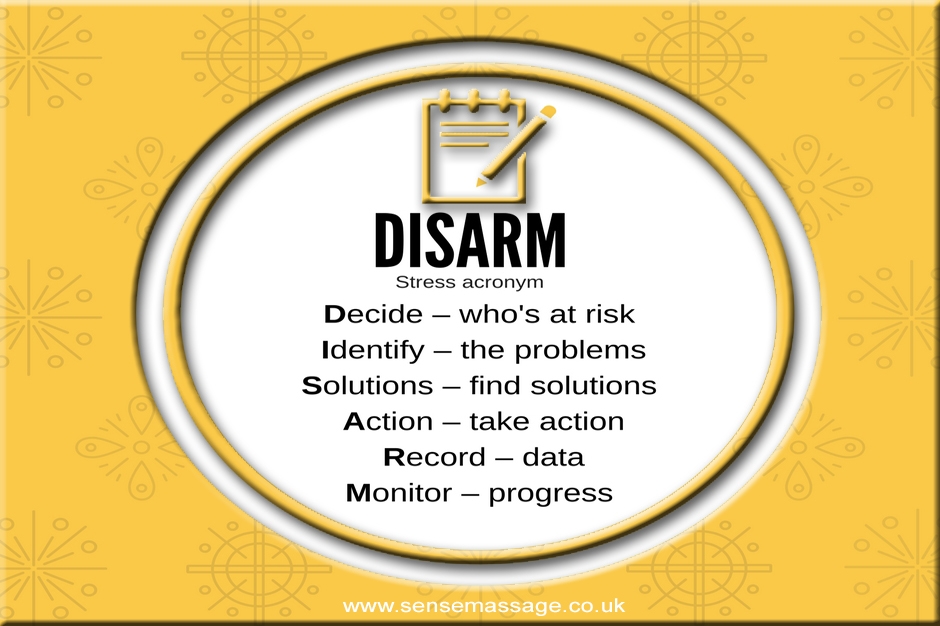There are certain key areas to address when applying a stress management program. Organisations and managers need to identify stress, decide who is affected and implement what actions should be taken. We have put together a simple acronym for managers to help tackle stress and disarm its harmful effects.
- DECIDE - Who is at risk in your organisation?
- Emotional conditions in staff to watch out for:
- Easily upset or agitated
- Lost for words
- Avoiding others and closed off
- Frequent sick days
- Generally unhappy
- Nervous
- Staff may also exhibit physical complaints such as:
- Frequent headaches
- Feeling exhausted and tired
- Lacking energy
- Tense muscles particularly in the shoulders and upper back
- Stomach ache or nausea
- Irritable bowel syndrome
- Disrupted immune system
- Poor sleeping patterns
- Emotional conditions in staff to watch out for:
- IDENTIFY - the potential problems. Working life can be very busy so have time to discuss pending problems with staff by holding regular meetings and communication updates will be invaluable.
- SOLUTIONS - schedule time to find solutions to stressful problems and deal with stressed employees in the same way as you would a staff member who suffers with a physical health problem.
- ACTION - Review your team’s workload and give clear direction to show what’s important and what’s not. Find tools and programmes to help staff organise and prioritise.Give realistic deadlines, try to forecast workloads and rotate tasks to keep staff motivated by giving them a chance to make a difference in their work.
- RECORD - ask anyone suffering from stress to keep a stress diary. This will help to identify and deal with any issues that are work related. When you agree actions keep a note of what’s been agreed, who needs to take action and a review date.
- MONITOR - Regularly review any agreed actions are recognise what works best and what could be done better.
Leading a team well requires clear vision, good communication and consistency so that your people feel empowered to do a great job every day, knowing that you are there to support them every step of the way.
